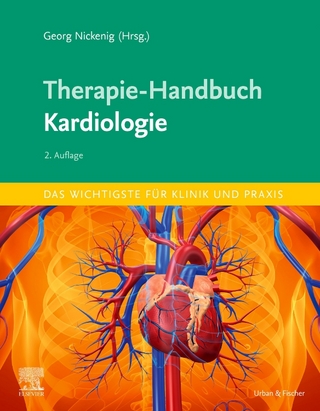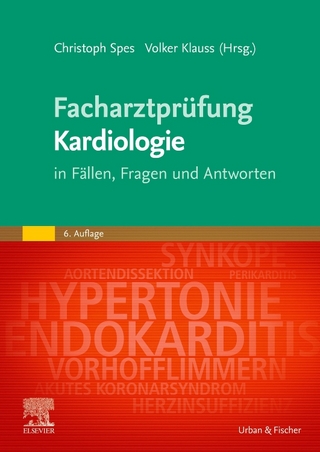
Theory of Heart
Springer-Verlag New York Inc.
978-0-387-97483-5 (ISBN)
- Titel ist leider vergriffen;
keine Neuauflage - Artikel merken
1 Structure and Function of the Diastolic Heart.- 1.1 Introduction.- 1.2 The Microstructure of the Heart.- 1.3 Mechanical Properties of Myocardium.- 1.4 Concluding Remarks.- References.- 2 Structural Considerations in Formulating Material Laws for the Myocardium.- 2.1 Introduction.- 2.2 Structural Background.- 2.3 Formulation of Stress-Strain Relations.- 2.4 Simulation of a Ventricular Wall Segment Subjected to Various Loading Conditions.- 2.5 Discussion.- References.- 3 Toward a Stress Analysis in the Heart.- 3.1 Introduction.- 3.2 Quantifying Material Properties.- 3.3 Characteristics of Cardiac Tissue.- 3.4 A Myocardial Constitutive Determination.- 3.5 Stress Analysis.- 3.6 Conclusions.- References.- 4 Identification of the Time-Varying Properties of the Heart.- 4.1 Introduction.- 4.2 Theory.- 4.3 Apparatus.- 4.4 Method.- 4.5 Results.- 4.6 Discussion.- References.- 5 Factors Affecting the Regional Mechanics of the Diastolic Heart.- 5.1 Introduction.- 5.2 The Left Ventricular Pressure-Volume Relation.- 5.3 Regional Ventricular Function.- References.- 6 Finite Element Modeling of Ventricular Mechanics.- 6.1 Introduction.- 6.2 The Finite Element Method.- 6.3 An Axisymmetric Finite Element Model of the Passive Left Ventricle.- References.- 7 Multidimensional Measurement of Regional Strains in the Intact Heart.- 7.1 Introduction.- 7.2 Strain Analysis.- 7.3 Finite Strains in the Normal Heart.- 7.4 Abnormal Finite Strains: Ventricular Pacing and Acute Ischemia.- References.- 8 Epicardial Deformation From Coronary Cinéangiograms.- 8.1 Introduction.- 8.2 Data Acquisition.- 8.3 Static Surface Estimation.- 8.4 Motion from Bifurcations.- 8.5 Motion from Vessels.- 8.6 Discussion.- References.- 9 Functional Consequences of Regional Heterogeneity in the Left Ventricle.- 9.1 Left Ventricular Heterogeneity Under Physiologic Conditions.- 9.2 Potential Mechanisms for Regional Heterogeneity in Deformation.- 9.3 Functional Consequences of Regional Heterogeneity.- 9.4 Theoretical Models of Regional Heterogeneity.- References.- 10 Mathematical Modeling of the Electrical Activity of Cardiac Cells.- 10.1 Introduction.- 10.2 Ionic Models Using the Hodgkin-Huxley Formulation.- 10.3 Background Currents.- 10.4 Activation.- 10.5 Inactivation.- 10.6 Pump and Exchange Currents.- 10.7 Applications of Ionic Models.- 10.8 Reduced Ionic Models.- 10.9 Single Channel Models.- 10.10 Single Channel Dynamics: Stochastic or Deterministic?.- References.- 11 Mathematical Models of Pacemaker Tissue in the Heart.- 11.1 Introduction.- 11.2 Modeling Aspects.- 11.3 The Bullfrog Sinus Venosus Pacemaker Cell.- 11.4 The Bullfrog Atrial Cell.- 11.5 The ACh-Sensitive K+ Current IK,ACh.- 11.6 Parasympathetic Control of the Rabbit SA Node Cell.- 11.7 Rabbit Atrial Cell Model.- 11.8 Modeling Nodal Regions.- 11.9 Summary.- References.- 12 Low-Dimensional Dynamics in the Heart.- 12.1 Introduction.- 12.2 Basic Concepts in Nonlinear Dynamics.- 12.3 A Topological Model of Cardiac Oscillators.- 12.4 Periodic Stimulation of Limit Cycle Oscillators.- 12.5 Stimulation of the Poincaré Oscillator at a Fixed Delay after an Action Potential.- 12.6 Periodic Stimulation of Excitable, Nonoscillating Cardiac Tissue.- 12.7 Applications and Limitations.- References.- 13 Iteration of the Human Atrioventricular (AV) Nodal Recovery Curve Predicts Many Rhythms of AV Block.- 13.1 Introduction.- 13.2 Derivation of the 1-Dimensional Map.- 13.3 Results of Iteration of the Map.- 13.4 Comparison with Clinical and Experimental Findings.- 13.5 Appendix.- References.- 14 Ionic Basis of the Wenckebach Phenomenon.- 14.1 Introduction.- 14.2 AV Nodal Wenckebach.- 14.3 Wenckebach in the Sucrose Gap.- 14.4 Wenckebach in the Ventricular Myocyte.- 14.5 Simulating Wenckebach in the Beeler and Reuter Model.- 14.6 The Recovery Curve.- 14.7 Ionic Mechanisms of Wenckebach Periodicity.- 14.8 Analytical Model of Wenckebach Periodicity.- 14.9 Conclusion.- References.- 15 Parasystole and the Pacemaker Problem.- 15.1 Introduction.- 15.2 The Pacemaker Problem.- 15.3 Dynamics of Pure Parasystole.- 15.4 Clinical Observations of Parasystole.- 15.5 Implications of Parasystole for Theory.- References.- 16 Electrical Propagation in Distributed Cardiac Tissue.- 16.1 Introduction.- 16.2 Passive Properties.- 16.3 Propagation in One Dimension.- 16.4 Propagation in Two Dimensions.- 16.5 Summary.- References.- 17 Wave Propagation in Myocardium.- 17.1 Introduction.- 17.2 The Nagumo Equation.- 17.3 Traveling Wave Solutions.- 17.4 Continuous Cable Theory.- 17.5 Discrete Cable Theory.- 17.6 A Modified Cable Theory.- 17.7 Comparison with Experiments.- 17.8 Discussion.- References.- 18 Cellular Automata Models of Cardiac Conduction.- 18.1 Introduction.- 18.2 CAMCC.- 18.3 Relation to Other Processes.- 18.4 Representing Conduction Physiology.- 18.5 Representing the Reentrant Core.- 18.6 Rationale for Interpretation of Lattice Structure.- 18.7 Spatial Variation in Conduction Physiology.- 18.8 Dynamical Inhomogeneities in Conduction Physiology.- 18.9 Conclusion.- References.- 19 Estimating the Ventricular Fibrillation Threshold.- 19.1 Introduction.- 19.2 The Continuum Approximation.- 19.3 The Diffusion Coefficient of Electric Potential.- 19.4 The Stimulation Threshold.- 19.5 Minimum-Energy Ventricular Pacing.- 19.6 The Ventricular Fibrillation Threshold.- 19.7 Vulnerable Period Duration.- 19.8 The Upper Limit of Vulnerability.- 19.9 Minimum-Energy Defibrillation.- 19.10 Transition from Reentrant Tachycardia to Turbulence.- 19.11 Conclusion.- References.- 20 Basic Mechanisms of Ventricular Defibrillation.- 20.1 Introduction.- 20.2 Location of Earliest Activation Following Failed Defibrillation Shocks.- 20.3 Origin of Activation after Unsuccessful Defibrillation Shocks.- 20.4 The Upper Limit of Vulnerability.- 20.5 The Upper Limit of Vulnerability Hypothesis for Defibrillation.- 20.6 Electrical Initiation of Ventricular Fibrillation.- 20.7 The Critical Point and the Upper Limit of Vulnerability.- 20.8 The Critical Point and the Probability Function of Defibrillation.- 20.9 Very High Potential Gradients Have Detrimental Effects on the Heart.- 20.10 The Mechanism of Defibrillation.- References.- 21 Mechanically Induced Changes in Electrophysiology: Implications for Arrhythmia and Theory.- 21.1 Introduction.- 21.2 Experimental Evidence for Mechanoelectric Feedback.- 21.3 Mechanism of Mechanoelectric Feedback.- 21.4 Mechanoelectric Feedback and Arrhythmia: General Considerations.- 21.5 Mechanoelectric Feedback and Arrhythmia: Clinical Considerations.- 21.6 Theoretical Implications.- 21.7 Summary.- References.- 22 Nonlinear Dynamics at the Bedside.- 22.1 Nonlinear Hearts.- 22.2 Dynamical Deceptions.- 22.3 The Prognosis For Nonlinear Science in Clinical Cardiology.- References.- 23 A Clinical Perspective on Theory of Heart.- 23.1 Introduction.- 23.2 Present Impact on Theory in the Clinical Arena.- 23.3 Future Considerations.- 23.4 Conclusion.- References.
| Verlagsort | New York, NY |
|---|---|
| Sprache | englisch |
| Themenwelt | Mathematik / Informatik ► Mathematik ► Algebra |
| Mathematik / Informatik ► Mathematik ► Angewandte Mathematik | |
| Medizinische Fachgebiete ► Innere Medizin ► Kardiologie / Angiologie | |
| Studium ► 1. Studienabschnitt (Vorklinik) ► Physiologie | |
| Naturwissenschaften ► Physik / Astronomie ► Angewandte Physik | |
| Naturwissenschaften ► Physik / Astronomie ► Theoretische Physik | |
| Naturwissenschaften ► Physik / Astronomie ► Thermodynamik | |
| Sozialwissenschaften ► Soziologie | |
| Technik | |
| ISBN-10 | 0-387-97483-0 / 0387974830 |
| ISBN-13 | 978-0-387-97483-5 / 9780387974835 |
| Zustand | Neuware |
| Informationen gemäß Produktsicherheitsverordnung (GPSR) | |
| Haben Sie eine Frage zum Produkt? |
aus dem Bereich


